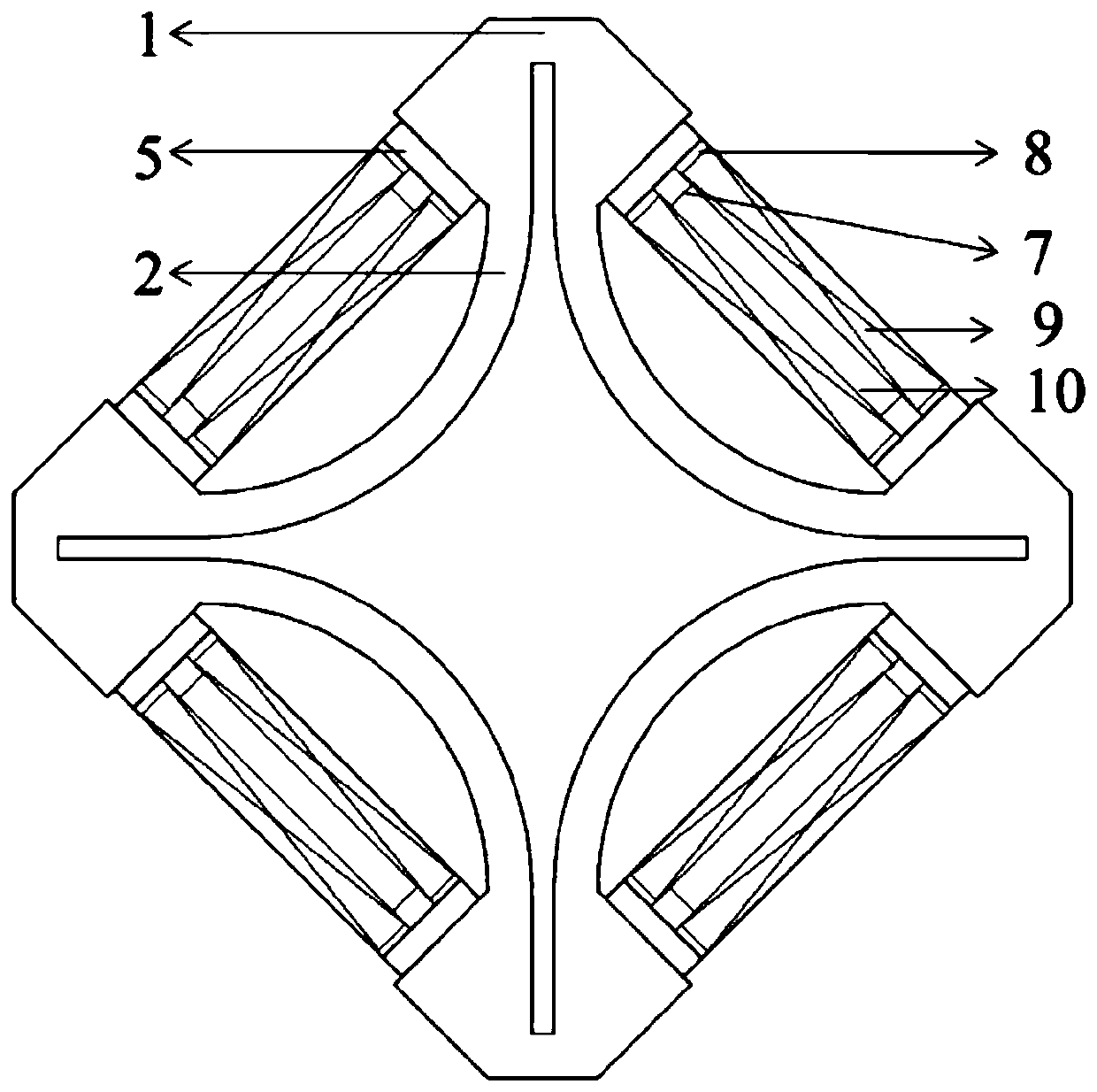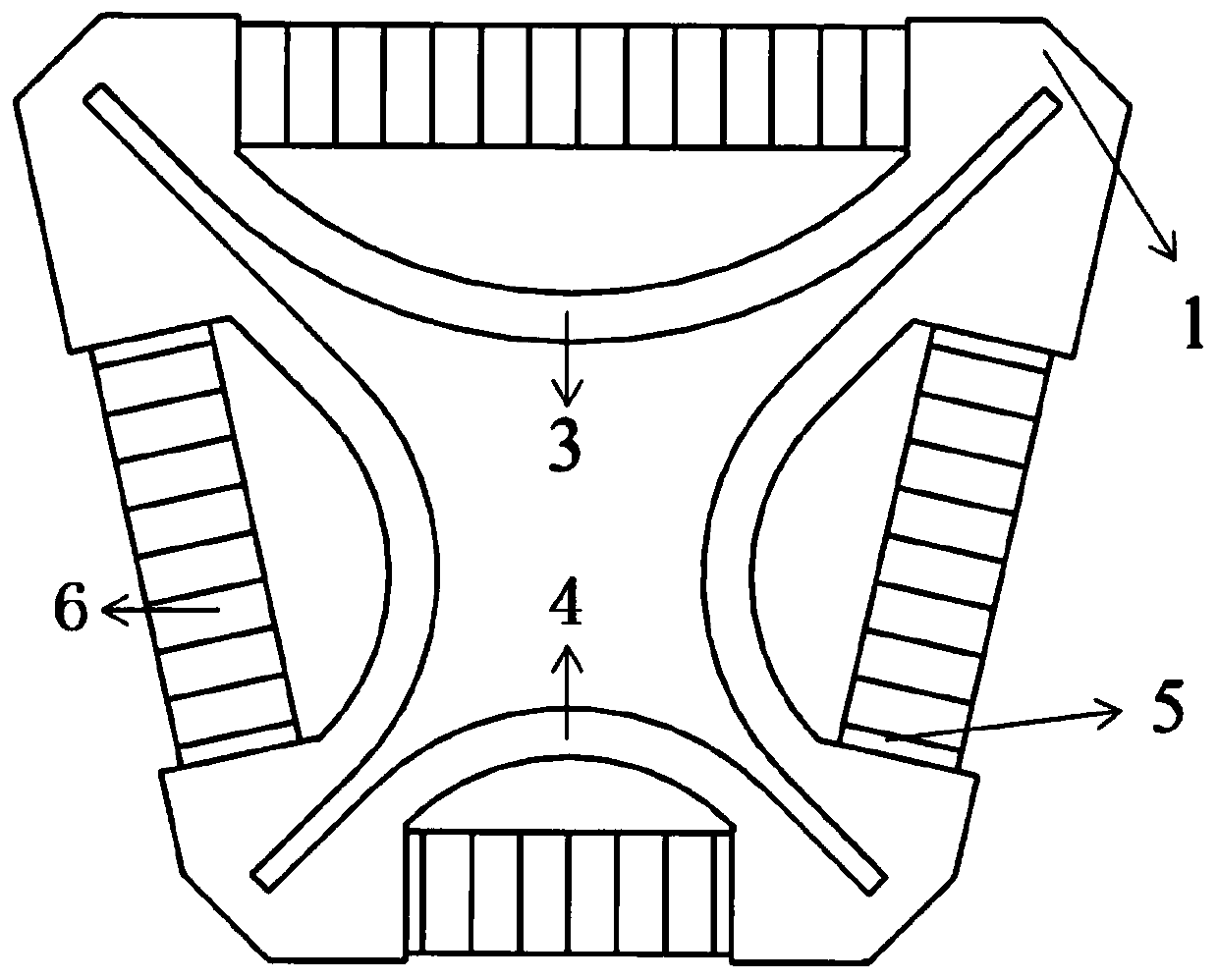A low-frequency frame-driven quadrilateral flexural transducer
A flextensional transducer and quadrilateral technology, applied to transducers, instruments, and sound-generating devices used underwater to achieve the effects of increasing power capacity, reducing stiffness, and improving sound radiation capabilities
- Summary
- Abstract
- Description
- Claims
- Application Information
AI Technical Summary
Problems solved by technology
Method used
Image
Examples
Embodiment 1
[0027] Combine figure 1 As shown, the radiating shell in this embodiment is a symmetrical quadrangular shell, which is formed by alternately connecting four T-shaped end caps 1 and four concave arc-shaped radiating surfaces 2. The driving element of this embodiment is a piezoelectric ceramic crystal stack 6, which is formed by bonding N rectangular piezoelectric ceramic sheets, where N is an even number ≥ 2, and the thickness direction of the rectangular piezoelectric ceramics One electrode sheet is placed between every two piezoelectric ceramic sheets; the driving element and the two transition blocks 5 on both sides thereof form a vibrator assembly, and the length of the vibrator assembly is longer than the corresponding two T-shaped end caps 1 The distance between the inner walls. When assembling the drive unit, by applying thrust from the inside to the outside on the concave arc radiating surface 2, the distance between the inner walls of the two T-shaped end caps 1 at both...
Embodiment 2
[0032] Combine figure 2 As shown, the difference from embodiment 1 is that the driving element in this embodiment adopts the rare earth giant magnetostrictive rod 10, and the coil bobbin 8 is sheathed, and the excitation coil 9 is wound on the coil skeleton 8. A piece of permanent magnet 7 is placed at each end of the rod 10. The rare earth giant magnetostrictive rod 10, the permanent magnet sheet 7 and the transition block 5 constitute a vibrator assembly. The assembly process of the transducer of this embodiment is the same as that of the first embodiment.
[0033] When the transducer is working, the rare earth giant magnetostrictive rod 10 generates magnetostrictive vibration under the combined action of the static bias magnetic field provided by the permanent magnet sheet 7 and the dynamic driving magnetic field generated after the coil 8 is energized, through the T-shaped end cap 1 The structure is mechanically coupled with the quadrilateral shell, so that the concave arc-...
Embodiment 3
[0035] Combine image 3 As shown, the difference from embodiment 1 and embodiment 2 is that the radiation shell in this embodiment adopts an asymmetric quadrilateral shell, consisting of four identical T-shaped end caps 1, and two concave arc-shaped long The radiating surface 3 and the two concave arc-shaped short radiating surfaces 4 are alternately connected.
[0036] The other parts of this embodiment are exactly the same as the first embodiment
PUM
 Login to View More
Login to View More Abstract
Description
Claims
Application Information
 Login to View More
Login to View More - R&D
- Intellectual Property
- Life Sciences
- Materials
- Tech Scout
- Unparalleled Data Quality
- Higher Quality Content
- 60% Fewer Hallucinations
Browse by: Latest US Patents, China's latest patents, Technical Efficacy Thesaurus, Application Domain, Technology Topic, Popular Technical Reports.
© 2025 PatSnap. All rights reserved.Legal|Privacy policy|Modern Slavery Act Transparency Statement|Sitemap|About US| Contact US: help@patsnap.com



